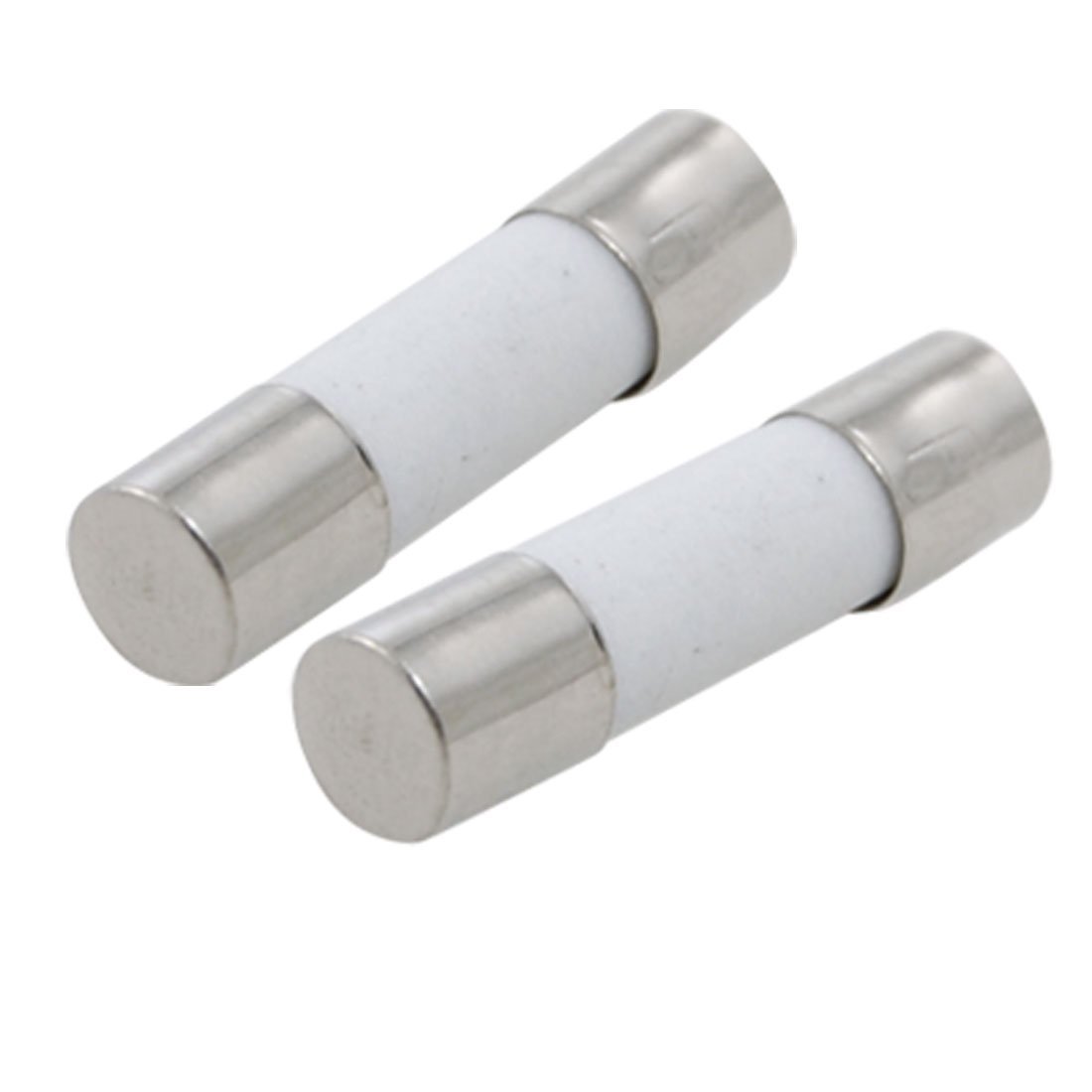Product Overview
The Ceramic Fuse T5 10A is a high-performance time-delay fuse designed to protect electrical circuits from overcurrent conditions. Built with a durable ceramic body, it provides superior thermal and short-circuit protection compared to glass fuses. With a 10A current rating and 5x20mm size, this fuse is ideal for power supplies, industrial equipment, household appliances, and electronic circuits.

Key Features:
- Time-Delay (T) Fuse – Allows brief surges without unnecessary tripping.
- High Breaking Capacity – Effectively protects against overcurrent and short circuits.
- Ceramic Body – Withstands high temperatures and ensures durability.
- Compact 5x20mm Size – Fits standard fuse holders for easy replacement.
- 10A Current Rating – Suitable for medium to high-power applications.
- Voltage Rating: Up to 250V AC.
- Reliable Performance – Ensures long-term circuit protection.
Technical Specifications:
- Fuse Type: Time-Delay (Slow Blow)
- Body Material: Ceramic
- Current Rating: 10A
- Voltage Rating: 250V AC
- Breaking Capacity: 1500A @ 250V AC
- Size: 5mm x 20mm
- Operating Temperature: -55°C to +125°C
- Standards Compliance: IEC 60127, UL Listed
Applications:
- Power Supplies – Protects against power surges and overloads.
- Industrial Equipment – Ensures safe operation of machinery and control circuits.
- Household Appliances – Used in washing machines, microwaves, and air conditioners.
- Consumer Electronics – Provides circuit protection in audio systems and televisions.
- Automotive & Marine Applications – Suitable for low-voltage electrical protection.
Why Choose the Ceramic Fuse T5 10A?
With high durability, superior thermal resistance, and reliable protection against overcurrent, the Ceramic Fuse T5 10A is an ideal choice for both industrial and household circuit protection needs.
Only logged in customers who have purchased this product may leave a review.



Reviews
There are no reviews yet.